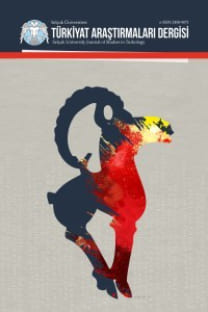Buhârâ Melikesi Kabac Hâtûn
Mâverâü’n-nehr’in en eski şehirlerinden biri olan Buhâra, tarih boyunca bölgenin en önemli kültür ve ticaret merkezi oldu. Bu süreç içerisinde şehri ilgilendiren en önemli tarihîhâdiselerden biri, Müslümanlar tarafından fethi ve bir Türk-İslâm şehri hâline gelmesiydi. Arap-İslâm orduları Hz. Ömer döneminde Âmûderyâ (Ceyhûn) Nehri kıyılarına kadarilerlediler. Muâviye döneminde ise Horasan valisi Ubeydullâh b. Ziyâd önderliğinde Ceyhûn Nehri’ni geçip Buhârâ’ya ulaştılar (53/673). Bu seferden sonra Sa‘îd b. Osmân (56/675-676) ve Selm b. Ziyâd (61/680-681) tarafından da bölgeye akınlar düzenlendi. Bu seferler sırasında (53-61/673-681) Buhârâ, Kabac Hâtûn adında Türk kökenli bir melike tarafından yönetilmek-teydi. Bölge halkı tarafından çok sevilen Kabac Hâtûn, hem başarılı ve âdil idaresi, hem de Emevî orduları karşısında tutumu ile bir efsâne hâline gelmişti.
Anahtar Kelimeler:
Buhârâ, Kabac Hâtûn, Horâsân, Mâverâü’n-nehr, Arap fetihleri
Queen of Bukhârâ Qabaj Khâtun
Bukhârâ is one of the oldest cities in Transoxiana, throughout the history of this region was the most important cultural and trade center. One of the most important historical events in this process for the city that the conquest of Muslims and became a Turkish-Islamic city. Arab-Muslim armies, had reached shores of the Oxus River, in Umar period. Governor of Khorasan Ubayd Allah b. Ziyâd passed the Oxus River and reached the Bukhârâ (53/673). After this conquest, were created raids by Sa‘îd b. Uthmân and Salm b. Ziyâd to the region. Bukhârâ during these conquests was governed, by a queen of the Turkish origin named Qabaj Khâtûn. Kabac was much loved by the people of the region, both succesfull administration and the attitude against the Umayyad armies she had become a legend.
Keywords:
Bukhârâ, Qabaj Khâtun, Khorâsân, Transoxiana, Arab Conquests,
- ISSN: 1300-5766
- Yayın Aralığı: Yılda 3 Sayı
- Başlangıç: 1994
- Yayıncı: Selçuk Üniversitesi
Sayıdaki Diğer Makaleler
Tanzimat Döneminde Bir Devlet Politikası Olarak Osmanlıcılık
Yüksek Öğrenimine Yeni Başlayan Türkçe Eğitimi Bölümü Öğrencilerinin Yazma Becerilerinin İncelenmesi
Türkçede Susma ve Sessizlik Kavramları Üzerine
Aşk Mesnevileri ve Gazellerdeki Sevgili İmajına Dair Bir Karşılaştırma
Gelişim Açmazı: 1888-1908 Osmanlı Türkiye’sinde Ziraat Bankası ve Ziraat Reformu
Donald QUATAERT, Çeviri Salih KIŞ
Türk Kültüründe Kız Kaçırarak Evliliğin Köy Seyirlik Oyunlarındaki İzleri
İttihat ve Terakki Cemiyeti’nin Propaganda Araçlarından Hayyeale‘l-Felâh Risalesi
